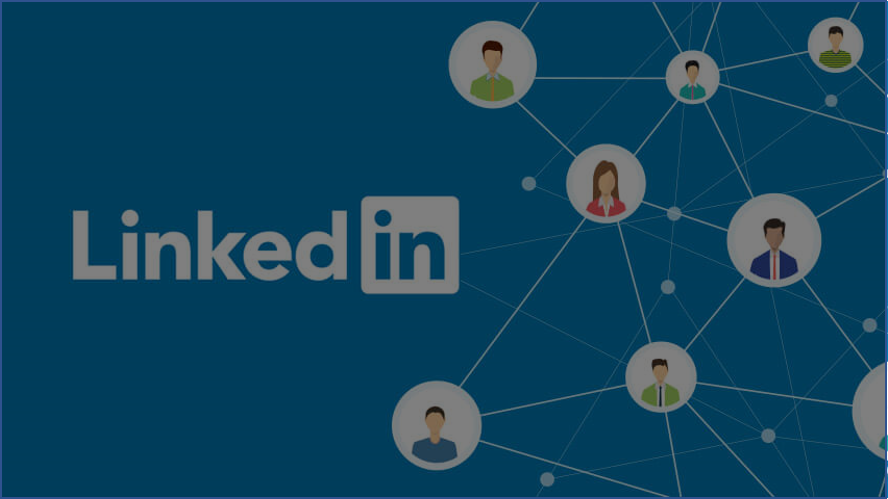Content distribution is a nightmare for B2B marketers who publish poorly-targeted promotions or spam people with irrelevant links. Although 78% of CMOs agree that content is driving the future of marketing, this idea doesn’t apply to businesses that share low-quality content.
Gaining B2B leads is freaking hard. With the complexity of B2B buyer journeys and the typical ICPs of prospects, it’s not enough to create content alone. Moreover, 63% of marketers find it difficult to generate traffic and leads.
Rather, your goal should be to build thought leadership by helping prospects solve their business pain points with your content. If you see content marketing as a long-term strategy, you’ll agree that it’s easier to guide leads towards your solution after you’ve captured their attention.
However, content is only effective when your target audience can find it on the right channel and at the right time. That’s why 91% of B2B marketers use LinkedIn for content distribution. With over 690 million members making 9 billion content impressions per week, LinkedIn is still the world’s largest professional audience. If you’ve ever been a job seeker, it will surprise you to know that LinkedIn makes 15X more content impressions than job postings.
In this article, we cover how content distribution works on LinkedIn. You’ll learn how to position your company and use the right content to attract dozens of leads. After reading this post, you’ll be able to leverage different distribution strategies that have been proven to get more ‘LinkedIn eyeballs’ on your content.
Is content distribution important?
Marketers hate to create content that goes unseen. After investing time, research, and dollars into creating quality content, it typically takes 4 – 6 months to start seeing tangible SEO results. So, many companies rely on social media platforms to generate traffic and leads before SEO juice begins to build up.
Nonetheless, some companies also distribute content on social media to supplement the organic traffic that comes from Search. Moreover, even Google actively shares content on LinkedIn. To generate awareness and drive dozens of qualified leads through any funnel, you have to deliver content assets that would be relevant at different stages of the buyer journey.
Whether your company is in a B2B or B2C niche, it boils down to understanding your target audience, the most preferred places where they hang out online, and the type of content they want to engage. As Leslie and Cassandra put it—creating a piece of content to serve multiple audiences is usually not a great idea.
With all of that in mind, you don’t have to call it quits whenever you hit publish in your preferred CMS. The web has become too busy and noisy for the right eyeballs to see your content without a quality distribution strategy. Whenever content is king, a solid distribution framework is always behind the scene.
Why use LinkedIn for B2B content distribution?
You shouldn’t be surprised that most B2B marketers use LinkedIn to distribute content. The platform makes it easy to find decision-makers using search filters that can generate millions of hyper-targeted prospects. Moreso, 4 out of 5 LinkedIn members are in decision making positions.
With over 2 million active LinkedIn groups, you can reach professionals who are connected by industry or share similar interests. As you can easily predict, your prospects are likely to be among the 18% of LinkedIn users that post their questions and frustrations in dozens of groups.
By networking in LinkedIn groups that are relevant to your product, you’re able to get a broader understanding of what your market finds interesting while building trust and authority. Now, this isn’t a call to spam all the LinkedIn groups you can find. Remember, you’re dealing with a professional audience that can identify poor content pieces or services from afar.
Your LinkedIn company page
LinkedIn allows companies to tell their stories, post updates, build reach, and network. With a LinkedIn Page, it’s easy for prospects, customers, investors, and even job seekers to learn more about your brand and what you stand for.
As you grow the following for your LinkedIn page, you gain access to analytics and insights about your page performance, followers, and even visitors. Nonetheless, not all company pages get regular engagement and visitors.
To make the most of every visit to your page, visitors have to leave with a good first impression. Ensure to fill out your page description, tag line, and company hashtags. If you want to get creative and increase page visits, you can include the keywords that your ideal prospects are actively searching. What’s more, use your company’s logo, cover image, and other branding assets that can differentiate the experience you give visitors.
Creating the right content for LinkedIn
While optimizing your LinkedIn page is a great first step, it’s not enough to drive visitors to your profile. On LinkedIn, B2B companies have the opportunity to share industry knowledge and thought-provoking content in different engaging forms.
You can share long-form articles, case studies, short videos, ebooks, whitepapers that help your ideal prospects to solve a problem or learn about a relevant topic. Although many people see LinkedIn as a recruiting site, it’s more of a thought leadership platform.
Over 45% of article readers on LinkedIn are upper-level executives such as CEOs, VPs, directors, and managers. Let’s dive into some important specifics that would help you create good content for your LinkedIn audience.
Who is your ideal audience?
You can’t create a distribution strategy that would generate leads if you don’t know who is meant to consume it in the first place. Besides, in most B2B sales cycles, the buyer of a product isn’t always the user.
For example, the VP of Marketing who is likely to influence the purchase for a martech tool would have varying buyer heuristics from the Content Marketer who might actively use the tool for keyword research.
While there may be a key decision-maker from upper-level ranks, typical B2B buying groups are averagely made up of 6-8 people. The thing is, knowing your target audience makes it way easier to create content that would resonate, generate B2B leads and social shares.
According to the Demand Gen B2B Buyer Report for 2020, over two-thirds of B2B buyers now rely more on content before making purchase decisions. 69% of the respondents would choose a B2B company that demonstrates a strong knowledge of the industry and the solution. 62% would go with the B2B vendor who provided content that made decision making easier, and 55% of respondents would pick the vendor that provided higher-quality content.
What type of content should you be creating?
Are you looking to establish industry knowledge and expertise? Do you want to educate upper-level executives? Do you want to generate leads or introduce a radical concept like inbound marketing?
In B2B content marketing, you need to be clear on what you intend to achieve with any piece of content you create. If you want to generate more leads for your sales funnel, you’re more likely to achieve this goal using webinars, how-to articles, case studies, ebooks, reports, and other sales collateral.
While lead generation content tends to be more tactical, content that demonstrates authority is more strategic, assertive, and oftentimes futuristic. With thought leadership content, you’re sharing your identity, your opinion, the values you uphold, what you stand for, your findings, and your experience.
Although this type of content is capable of driving awareness, it might not generate immediate leads or sales in the beginning. ‘Inbound marketing’ now generates thousands of searches per month, but this wasn’t the case when Brian, the CEO of Hubspot, introduced the concept some 15 years ago.
There are interesting and engaging ways to create thought-provoking content. But it begins with seeing thought leadership as an approach to content rather than a type of content. When done well, you end up positioning your brand the way you want it to be seen by prospects, customers, competitors, investors, and your entire industry.
Distributing B2B content on LinkedIn
There’s no ‘holy grail’ approach to distributing content that generates dozens of leads. It’s still the same old trick of understanding the market you want to reach and getting your content into their hands without hard selling from the beginning.
If you want to generate leads from LinkedIn on a sizable budget, you can choose to run sponsored updates, targeted updates, or message ads. However, there are other strategies that can deliver great results without heavy spendings on paid distribution. We’ll talk about them in a moment.
Almost everyone hates to create content that gets no engagement, no comments, no social shares, or some form of virality. So, many B2B marketers make the mistake of tracking content metrics that don’t necessarily influence the health of the business.
A better way to measure impact and success with B2B content marketing or distribution is to monitor the metrics that influence growth and revenue rather than engagement.
Company updates
With a LinkedIn Company Page, you can share news, promote events, and showcase your company culture using 700 text characters or even video content. According to a survey by Isoline, 53% of tech B2B buyers consider video to be the most useful form of content. No wonder, video content gets 5x more engagement on LinkedIn than non-video content.
When you publish company updates your followers get instantly notified. However, if you want to reach more people outside of your page followers and visitors you’d have to pay to use Sponsored Updates.
If you have published an organic update that generated lots of engagement in the past, you can choose to sponsor if you find it relevant for your target market or capable of generating leads.
On the other hand, If you want to create sponsored updates that won’t appear as organic updates on your LinkedIn page, you can create Direct Sponsored content as ads in Campaign Manager.
While companies such as Hubspot have gained 400% more leads using Sponsored Updates, this result may not be typical for B2B startups operating on lean budgets with no brand awareness.
Republishing long-form content
LinkedIn drives more than 50% of social traffic to B2B blogs and websites. If you’re not maximizing LinkedIn’s massive audience base, you’re leaving too much on the table.
Gregory Ciotti who is now a marketer at Shopify performed a LinkedIn publishing experiment that generated over 255k views in 30 days. Although one article generated 212k of the total views, it’s astounding that 34 other articles contributed over 42k views in a single month.
If you already create long-form articles for your blog, you can either republish them on LinkedIn or publish LinkedIn articles that link to the content and other sales assets on your website. Now, you may be wondering—isn’t Google meant to penalize sites for duplicate content?
You’re not alone. Here’s a similar question from a B2B marketer in the Google Search Console Community:
Here’s the answer he received:
Although platforms such as Medium use canonical tags to make republishing and cross-posting easy, LinkedIn doesn’t use canonical tags to specify to Google the link to rank or ignore.
However, Google has pointed out that it ranks the most appropriate version of any duplicate content. So, including a link to the original article wouldn’t hurt. While it might not directly influence your site traffic, your content stands a chance to be found by prospects.
With unique, high-quality content, your LinkedIn articles are bound to gain dozens of views. Paul Shapiro analyzed 3000 successful LinkedIn posts and found that long-form pieces of 1900 words generate the most views.
Publishing original thought-provoking articles is a great way to generate leads and build your profile on LinkedIn. When prospects read your articles, they are more likely to visit your LinkedIn page and make inquiries. However, LinkedIn only allows individual profiles to publish long-form content.
Employees have superpowers
Employees generate 30% of engagement for LinkedIn company pages. However, what’s interesting is that employees are 14x more likely to share content from their employers on LinkedIn. Besides, company pages can only publish updates and not long-form articles.
When employees share updates or publish articles that are linked to the company, their LinkedIn network and connections become your potential reach as well. And if they link to the company page from their LinkedIn profiles, it’s even easier to build trust and credibility.
Nonetheless, your company page should also share videos and pictures of your employees and other exciting moments. By doing this, you’re showing the humane part of your company that people really care about.
LinkedIn groups
LinkedIn Groups are made up of people who share similar interests or identities. These groups are great ‘hangout spots’ where you can interact, seek advice, ask questions, and build connections with like-minded professionals.
This kind of hyper-targeting and segmentation makes it possible for you to find niche audiences that might be interested in your product. However, you can only join LinkedIn Groups as an individual.
What this means is that you’d have to engage with group members as a person and not as a company. While you’re free to create your own LinkedIn Group, being a member of an existing group gives you insights as you interact or listen to your target audience.
The best way to make the most use of LinkedIn Groups is to engage in discussions, share your experiences, and free content. As you continue to help people out, you end up driving prospects to your LinkedIn profile to learn about your company and the problems you solve.
LinkedIn automation
The most interesting thing about LinkedIn is how easy it’s to search for people. The platform offers multiple filtering combinations that allow you to reach highly targeted audiences. You can choose to search for prospects based on location, industry, experience, connections, demography, and more.
However, if you want to connect and also follow up with these prospects manually, you might end up resenting yourself for time-wasting. Let’s assume that you have a search list of 1000 LinkedIn users. If it takes an average of 1 minute (very unlikely) to send a personalized request, you’d end up spending 1000 minutes or more (very likely).
Nonetheless, LinkedIn automation tools such as Salesloop now make this process easier and faster. As a cloud-based platform, you can use Salesloop without violating LinkedIn safety measures.
What this means is that you can decide to search for LinkedIn users who’re more likely to read a piece of content, and use Salesloop to automatically send a personalized connection request and follow-up message with a link to your article.
However, this approach might only yield good open rates when you use LinkedIn robust search filters to find the right audience, personalize your message, and share relevant content. According to LinkedIn, you’re 70% more likely to gain the attention of a user if you mention a mutual LinkedIn group. The limit is in how creative you can get.
Wrapping up
As long as you create original and high-quality content that resonates with your target buyers, it’s possible to attract potential leads on LinkedIn. From leading Fortune 500 employees to professionals who make decisions at scales-ups and start-ups, you have access to leads that can fill your sales pipeline. It’s your choice to make the most use of this audience to grow your business. Creating great content is one thing, it’s the content distribution that’s going to get you the results.





